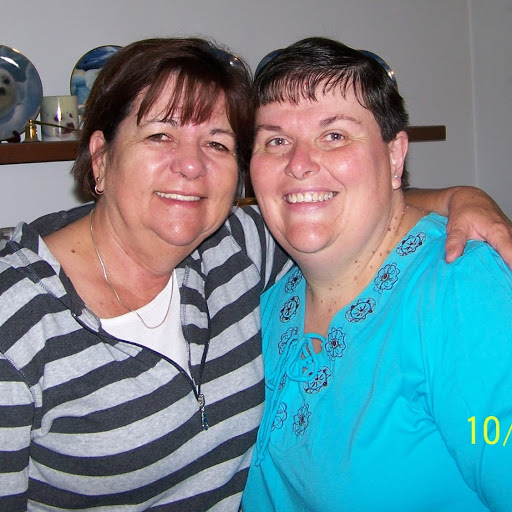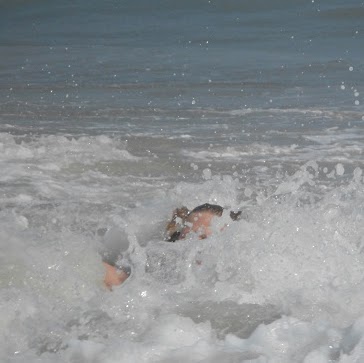Tammy L Savage
age ~56
from Clovis, CA
- Also known as:
-
- Tammy M Savage
- Tammy Lynae Morrison
- Tammy L Morrison
Tammy Savage Phones & Addresses
- Clovis, CA
- Snoqualmie Pass, WA
- Fresno, CA
- 1716 Arch Ave SW, Seattle, WA 98116
- Kirkland, WA
- Kiona, WA
- Parlier, CA
- Redmond, WA
- Snoqualmie Ps, WA
Work
-
Company:Microsoft corporation
-
Address:1 Microsoft Way, Redmond, WA 98052
-
Position:Product manager
Education
-
Degree:Associate degree or higher
Us Patents
-
System And Method For Shared Integrated Online Social Interaction
view source -
US Patent:7234117, Jun 19, 2007
-
Filed:Aug 28, 2002
-
Appl. No.:10/230247
-
Inventors:Melora Zaner - Seattle WA, US
Kathleen Mulcahy - Seattle WA, US
Erica Sanders - Seattle WA, US
Cesare John Saretto - Seattle WA, US
Eugene Zarakhovsky - Seattle WA, US
Eugene Mesgar - Seattle WA, US
Neel Ishwar Murarka - Seattle WA, US
Heather Ferguson - Centralia WA, US
Asta Glatzer - Redmond WA, US
Rama Ranganath - Seattle WA, US
Tammy Savage - Seattle WA, US
John Vert - Seattle WA, US
Linda Stone - Seattle WA, US -
Assignee:Microsoft Corporation - Redmond WA
-
International Classification:G06F 3/00
-
US Classification:715758, 715751, 715769, 715753
-
Abstract:A novel application and user interface for facilitating group interactions over a network integrates messaging, file sharing, media playing, journaling, profiles, and gaming into a cohesive environment. The groups facilitated by the invention are persistent and mobile in that a user does not have to recollect and reconfigure the group each time he or she wants to interact with the group online and, while online, the group may be taken from one activity to another without having to disband and reconnect at the second activity. The application is modular so as to be extensible to include other activities and functionalities. In an embodiment, the group interaction application utilizes a peer-to-peer network environment to facilitate network communications between group members.
-
Virtual Calling Card System And Method
view source -
US Patent:7373609, May 13, 2008
-
Filed:Apr 11, 2006
-
Appl. No.:11/279357
-
Inventors:Melora Zaner - Seattle WA, US
Cesare John Saretto - Seattle WA, US
Eugene Mesgar - Seattle WA, US
Neel Ishwar Murarka - Seattle WA, US
Eun-Kyung Chung - Redmond WA, US
Kathleen Mulcahy - Seattle WA, US
Rama Ranganath - Seattle WA, US
Erica Sanders - Seattle WA, US
Tammy Savage - Seattle WA, US
Linda Stone - Seattle WA, US
John Vert - Seattle WA, US -
Assignee:Microsoft Corporation - Redmond WA
-
International Classification:G06F 3/00
-
US Classification:715753, 715751, 715752
-
Abstract:A novel virtual calling card system and method aid in the formation of online relationships, serving as an introduction tool and as a contact mechanism. The calling card is an exchangeable entity that is automatically updated, ensuring that the recipient or viewer sees the most current version of the card. The card may display an aspect ratio that is the same as that of a traditional business card, and has a front side and a reverse side. Furthermore, the card provides a number of avenues for the card owner to express themselves, including an array of affiliation symbols, a most recent mood symbol, and a text field. The reverse side of the card can display a representation of the owner's social network, so that the recipients of the card may identify common friends and associates. Thus, the sewer-based card exchange appears to users as an exchange in the physical world.
-
Customizable Service Provider User Interface
view source -
US Patent:7464342, Dec 9, 2008
-
Filed:Feb 28, 2006
-
Appl. No.:11/276446
-
Inventors:Tammy L Savage - Seattle WA, US
Wende E Copfer - Bothell WA, US
Allison O'Mahony - Redmond WA, US
Rodney C Edwards - Redmond WA, US
Darwin K Yamamoto - Redmond WA, US -
Assignee:Microsoft Corporation - Redmond WA
-
International Classification:G06F 15/00
G06F 13/00 -
US Classification:715840, 715853
-
Abstract:A customizable service provider user interface is described. In an implementation, a user is logged onto a suite a web services, to which, the user has not previously logged on. A user interface is output having a plurality of portions, one or more of which are customizable by the user through use of one or more overlays to customize interaction with the suite of web services.
-
Virtual Calling Card System And Method
view source -
US Patent:7516409, Apr 7, 2009
-
Filed:Apr 11, 2006
-
Appl. No.:11/279356
-
Inventors:Melora Zaner - Seattle WA, US
Cesare John Saretto - Seattle WA, US
Eugene Mesgar - Seattle WA, US
Neel Ishwar Murarka - Seattle WA, US
Eun-Kyung Chung - Redmond WA, US
Kathleen Mulcahy - Seattle WA, US
Rama Ranganath - Seattle WA, US
Erica Sanders - Seattle WA, US
Tammy Savage - Seattle WA, US
Linda Stone - Seattle WA, US
John Vert - Seattle WA, US -
Assignee:Microsoft Corporation - Redmond WA
-
International Classification:G06F 3/00
-
US Classification:715751, 715752, 715753, 715758
-
Abstract:A novel virtual calling card system and method aid in the formation of online relationships, serving as an introduction tool and as a contact mechanism. The calling card is an exchangeable entity that is automatically updated, ensuring that the recipient or viewer sees the most current version of the card. The card may display an aspect ratio that is the same as that of a traditional business card, and has front side and a reverse side. Furthermore, the card provides a number of avenues for the card owner to express themselves, including an array of affiliation symbols, a most recent mood symbol, and a text field. The reverse side of the card can display a representation of the owner's social network, so that recipients of the card may identify common friends and associates. Thus, the server-based card exchange appears to users as an exchange in the physical world.
-
Shared Online Experience Encapsulation System And Method
view source -
US Patent:7530028, May 5, 2009
-
Filed:Feb 3, 2004
-
Appl. No.:10/770794
-
Inventors:Kathleen Mulcahy - Seattle WA, US
Eun-Kyung Chung - Redmond WA, US
Geoffrey Elliott - Seattle WA, US
Heather Ferguson - Centralia WA, US
Asta Roseway - Redmond WA, US
Tammy Savage - Seattle WA, US
Melora Zaner - Seattle WA, US -
Assignee:Microsoft Corporation - Redmond WA
-
International Classification:G06F 3/048
G06F 3/00 -
US Classification:715772, 715753, 715759, 715706
-
Abstract:A novel technique enables participants of an online group interaction to capture and encapsulate an ongoing activity at a particular moment in time. During the online group interaction, a user activates an icon, and is enabled to select properties of the saved memory, such as icon color/image for the saved material, what parts of the shared experience to save, etc. For example, the user may want to save all or some of the conversation, music played, scores for a game played, and the pictures viewed during the session, as well as any other portion desired. The saved material may represent a snapshot of the activity at save time, or may comprise a sequence of events up to the point that the material was saved. While saving the selected material, the application displays an animation such as an origami-type animation of a box folding up from a flat sheet.
-
Interactive Electronic Bubble Messaging
view source -
US Patent:7571213, Aug 4, 2009
-
Filed:Mar 26, 2004
-
Appl. No.:10/811035
-
Inventors:Joseph Walkush - New York NY, US
Melora Zaner - Seattle WA, US
Tammy Savage - Seattle WA, US
Eun-Kyung Chung - Redmond WA, US
Caroline Rockey - Seattle WA, US
Eugene Mesgar - Palo Alto CA, US
Heather Ferguson - Ithaca NY, US
Kathleen Mulcahy - Brighton MA, US -
Assignee:Microsoft Corporation - Redmond WA
-
International Classification:G06F 15/16
-
US Classification:709206, 709204, 709207, 715751, 715758
-
Abstract:Bubble messaging may include creating a bubble message and seamlessly sending the bubble message to one or more recipients. The bubble message may include message text and a bubble message shape specification. As a result of the bubble message being sent, a notification of the bubble message may be received. The notification of the bubble message may be displayed and, in response to recipient interaction with the displayed notification, a bubble message open animation may be displayed that provides a transition to a shape specified by the bubble message shape specification. The bubble message may be displayed with the shape specified by the bubble message shape specification. A bubble message editor may be configured to enable the creation and seamless sending of the bubble message. A bubble message viewer may be configured to enable the display of bubble messages. The bubble message may be unmodifiable after creation.
-
Integrated Experience Of Vogue System And Method For Shared Integrated Online Social Interaction
view source -
US Patent:7689922, Mar 30, 2010
-
Filed:Apr 21, 2006
-
Appl. No.:11/379640
-
Inventors:Melora Zaner - Seattle WA, US
Kathleen Mulcahy - Seattle WA, US
Erica Sanders - Seattle WA, US
Cesare John Saretto - Seattle WA, US
Eugene Mesgar - Seattle WA, US
Neel Ishwar Murarka - Seattle WA, US
Heather Ferguson - Centralia WA, US
Asta Glatzer - Redmond WA, US
Rama Ranganath - Seattle WA, US
Tammy Savage - Seattle WA, US
John Vert - Seattle WA, US
Linda Stone - Seattle WA, US -
Assignee:Microsoft Corporation - Redmond WA
-
International Classification:G06F 3/00
G06F 3/048 -
US Classification:715751, 715753, 715754, 715755, 715758, 715759
-
Abstract:A novel application and user interface for facilitating group interactions over a network integrates messaging, file sharing, media playing, journaling, profiles, and gaming into a cohesive environment. The groups facilitated by the invention are persistent and mobile in that a user does not have to recollect and reconfigure the group each time he or she wants to interact with the group online and, while online, the group may be taken from one activity to another without having to disband and reconnect at the second activity. The application is modular so as to be extensible to include other activities and functionalities. In an embodiment, the group interaction application utilizes a peer-to-peer network environment to facilitate network communications between group members.
-
Mobile Shared Group Interaction
view source -
US Patent:7702728, Apr 20, 2010
-
Filed:Jan 30, 2004
-
Appl. No.:10/769425
-
Inventors:Melora Zaner - Seattle WA, US
Eun-Kyung Chung - Redmond WA, US
Kathleen Mulcahy - Seattle WA, US
Cesare John Saretto - Seattle WA, US
Asta Roseway - Redmond WA, US
Tammy Savage - Seattle WA, US -
Assignee:Microsoft Corporation - Redmond WA
-
International Classification:G06F 15/16
-
US Classification:709205, 715758
-
Abstract:Techniques for enabling mobile shared group interaction are described. Members of a group may access, through a user interface, group activities that provide a shared, synchronous, interactive experience. An interface may be provided via a mobile device such as a cellular telephone that enables members who are mobile to participate in group activities with other members who are also mobile or who are logged on via a non-mobile device such as a desktop computer system.
Name / Title
Company / Classification
Phones & Addresses
Product Manager
Microsoft Corporation
1 Microsoft Way, Redmond, WA 98052
Resumes

Tammy Savage
view source
Tammy Savage
view source
Tammy Savage
view source
Tammy Savage
view source
Tammy Savage
view source
Tammy Savage
view source
Tammy Savage
view source
Tammy Savage
view sourceYoutube
Googleplus

Tammy Savage

Tammy Savage

Tammy Savage

Tammy Savage

Tammy Savage

Tammy Savage

Tammy Savage

Tammy Savage
Flickr

Tammy Littles Savage
view source
Tammy Savage Mapel
view source
Tammy Savage
view source
Tammy Harding Savage
view source
Tammy Savage Harm
view source
Tammy Robertson Savage
view source
Tammy Fritz Savage
view source
Tammy Pipkin Savage
view sourceMyspace
Classmates

Tammy Chapman (Savage)
view sourceSchools:
Leroy High School Leroy AL 1980-1984
Community:
Billie Brown, David Morris
Biography:
HELLO,
I HAVE BEEN MEANING TO DO THIS SINCE I JOINED SO, BETTER LATE THAN NEVER. SO,...

Tammy Savage
view sourceSchools:
Sayre Junior High School Philadelphia PA 1973-1977
Community:
Karen Eaddy, Ava Gordon, Mary Robinson, Michael Loeser, Lawrence Dejarnette

Tammy Savage (Ellis)
view sourceSchools:
Wendell L. Willkie High School Elwood IN 1967-1971
Community:
Robert W

Tammy Guillot (Savage)
view sourceSchools:
Helen Cox Junior High School Harvey LA 1971-1975
Community:
Michelle Turner, Shern Taylor, Rebecca Phillips, Joanne Martin, Richard Epps, Brian Guggenheimer

Tammy Savage
view sourceSchools:
Garrison High School Garrison ND 1976-1980
Community:
Kathy Kimsey, Tj Jerde, Mona Hummel, Paul Reuter

Tammy Thomas (Savage)
view sourceSchools:
Bruceton High School Bruceton Mills WV 1969-1976
Community:
Sandra Ruoff, Walter Moser, Bonnie Jacks, Sheldon Smith, Mmichael Ditmore, Bill Kurilko

Tammy Soreth (Savage)
view sourceSchools:
Coughlin High School Wilkes-barre PA 1975-1979
Community:
Jim Monko, Beth Roche

Tammy Kropp (Savage)
view sourceSchools:
Warsaw High School Warsaw IL 1978-1982
Community:
Deena Unger
Get Report for Tammy L Savage from Clovis, CA, age ~56





















